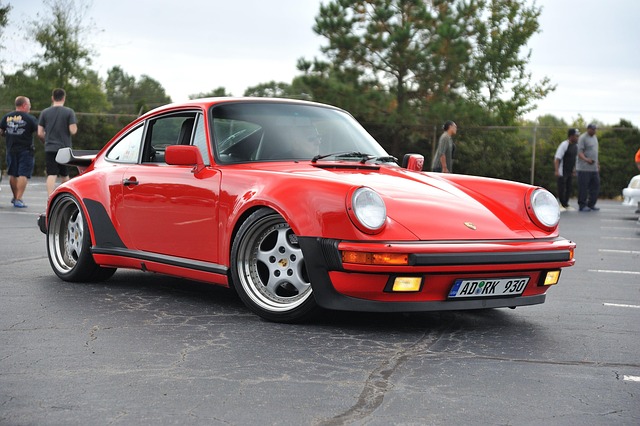Keep it simple – how will it change your car’s noise, effect on power and whether it meets local rules. Custom exhausts usually increase vehicle noise and can sometimes alter engine behavior, so see if the tone fits your commute. Certain systems can assist engines in breathing better, but not all will suit every car model. Most places have noise or pollution limits and a new exhaust may not cut it. To stay out of trouble or avoid fines, check the regulations in your state before doing so. The following section provides advice for selecting a system that suits you and your vehicle.
Key Takeaways
- Know what you want– performance goals, budget, compatibility– before choosing any custom exhaust system to install.
- Look into exhaust materials like stainless steel and titanium, to maximize both performance and life span through durability, weight and heat resistance.
- Be sure to check your local and national laws on emissions and noise to make sure you’re not exceeding legal limits.
- Know that real-world performance improvements—whether in terms of horsepower, torque, or fuel efficiency—are contingent on system design, appropriate sizing, and supporting mods like tuning.
- Test sounds and drone’, as they significantly affect your experiences behind the wheel every day.
- Professional install vs D-I-Y — Be honest with yourself about your technical ability, tools available and the difficulty of the system you chose to prevent expensive errors.
Your Custom Exhaust Guide
Putting in a custom exhaust is a technical installation that mixes performance, compliance, and aesthetics. Being knowledgeable about what you’re trying to accomplish and the impact each decision has on your car can be crucial to your success. Establish your performance goals and limitations prior to beginning. Keep budget, compatibility, materials and the law in mind to prevent expensive errors or legal hassles.
- Boost engine power and response
- Change the exhaust tone or volume
- Enhance visual appeal with polished tips or unique layouts
- Make the car racing ready, off-road ready, or street ready
- Improve exhaust flow for fuel economy and emissions
Define Your Goal
To begin, define your primary objective—perhaps increased horsepower, a richer exhaust note, or simply an updated appearance. If you drive daily, you may want a system that’s not too loud yet still enhances performance. Racing or off-road? A lighter, more aggressive system might be better. Determine if you want things like modular sections or removable mufflers. Think long-term: a system fit for weekend racing may not work for city commutes or meet noise rules.
Set Your Budget
Include the base price for pipe, mufflers and tips, then add on installation fees. Some jobs might require additional effort—like new hangers or cutting—so maintain a padding fund for clutch expenses. Prices can vary quite a bit between different brands and shops. Compare quotes, inquire about shop labor rates, and see if the price includes welding or custom bends. A little bit of research now saves money and stress down the road.
Understand Your Car
See what type and size engine your car has. Not all after market parts fit all models, particularly if your car has an non-standard exhaust routing or previous upgrades. The manual provides specs that count – such as pipe diameter and catalytic converter requirements. Even minor concerns — like ground clearance — can switch up your choices. Compatibility is key: some universal kits don’t match specific models, which can mean more work during install.
Research Materials
Stainless steel is rugged and rust-resistant, ideal for everyday carry or severe conditions. Titanium is lighter, great for performance but more expensive. Consider how each material treats heat—stainless retains it, which can promote gas flow, but aluminum dissipates quickly. Finishes are important as well, polished tips look slick but require additional maintenance. Compare looks vs. Life and price before you choose.
Know The Law
Most countries have stringent emissions and noise regulations. Certain regions restrict how loud an exhaust may be or mandate some type of catalytic converters. Consult both national and local legislation, as they can conflict. Skip fines or failed inspections and ensure your system is good to go on all regulations prior to purchase. Noise and emission laws change, so stay up to date.
Performance: Reality vs. Myth
Aftermarket exhausts are frequently sold as an easy means of upping a car’s performance. We often hear of dramatic horsepower increases and enhanced throttle response. Actual performance numbers hinge on unique vehicle configuration, exhaust layout and additional modifications. Not all systems live up to their billing, and each upgrade can have a different effect. Evaluating performance claims critically helps you avoid disappointment and make sure the investment supports your objectives.
Horsepower Gains
Horsepower gains from custom exhausts are not blanket. Gains are contingent on the vehicle’s engine type, age and factory exhaust limitations. Some cars, particularly those already fitted with efficient stock systems, will realize only marginal gains–usually under 5%. Older models with restrictive exhausts might gain more significantly, with anecdotal reports of 5–10% higher power.
Exhaust flow is what counts. Bend-eliminating, pipe-increasing systems can reduce resistance, making the engine ‘breathe’ better. This can boost production, but only up to a degree. Bigger pipes can lose you low-end oomph if they’re too big and slow the gas down.
Tuning is key. Gains are optimized when the exhaust upgrade is combined with ECU tuning or performance air intakes. Popular sports cars, for example, case studies demonstrate that exhaust by itself seldom adds more than a couple kW unless combined with other modifications.
Torque Curves
A well-tuned exhaust can level and elevate the torque curve throughout the RPM band. Mid- and high-rev gains are common, but of course numbers will vary based on pipe diameter, length, and muffler design.
Backpressure is important! Too little can drop torque at low speeds, too much can choke the engine. Sizing must suit the engine: A small-displacement four-cylinder may lose low-end torque with a big-bore exhaust, while a large V8 could benefit.
Even two cars of the same model may respond differently to the same system, depending on engine tuning and modification history.
Throttle Response
- Fewer bends and smoother pipe walls can accelerate exhaust flow.
- A tuned system reduces resistance, allowing the engine to respond quicker.
- Less backpressure means quicker engine response during acceleration.
- Real-world testing—driving similar cars—shows subtle but noticeable changes.
Both proper tuning and design provide the best throttle feel but effects are not always dramatic.
Fuel Economy
Some drivers do see minor fuel savings, particularly at consistent highway speeds. That’s because the engine does less work pushing exhaust gases.
A good exhaust can boost engine efficiency by a couple percentage points. Savings are typically smashed by the aggressive driving promoted by the sportier sound.
Measure your own fuel consumption pre- and post-swap to determine whether or not the improvements are genuine. Sometimes, the changes are too subtle to detect.

The Sound Equation
Sound is what’s at the heart of any custom exhaust system’s appeal. The science of exhaust acoustics is based on how sound waves propagate and reflect inside metal tubes. Muffler design, at its core, plays with these waves to craft volume, tone and quality. The sound equation is key—mixing wave and acoustic science, employing interference and resonance to enhance or mute sound. For reference, the waves of sound travel approximately a mile in five seconds, and how they reverberate or resonate inside the pipes determines the resulting note. The exhaust sound isn’t simply loud or quiet. It’s about tuning pressure waves so that they converge or cancel, forming a unique signature for each vehicle.
Volume
Volume isn’t simply a nice-to-have, it’s frequently legally mandated. Most areas have a maximum decibel level for road vehicles, so check your local laws. Adjustable exhausts allow for customization, enabling drivers to dial in sound levels that suit their preference and meet regulatory standards. Pipe diameter and muffler design play a big role: wider pipes and straight-through mufflers usually make the system louder, while chambered mufflers can lower the decibel output. Always try out alternative configurations before settling on a plan, because the comfort inside the cabin can shift with even minor design adjustments.
Tone
Tone lends character to the exhaust note–a deep growl, a sharp bark, or somewhere in between. Sound waves have their own math to them, and when two crests meet, they will amplify specific frequencies. Mufflers and resonators each shape the sound: a glasspack, for instance, tends to give a higher pitch, while a chambered muffler delivers a deeper sound. Playing around with the mix is the trick. Exhaust routing – an H-pipe vs an X-pipe – shifts the tonal balance and can make a car sound smoother or more aggressive.
Drone
Drone is the annoying hum or buzz that permeates the cabin at specific RPMs. Badly engineered exhausts frequently induce this problem when pressure waves reverberate, resonating at certain velocities. Adding resonators or selecting a muffler designed to disrupt standing waves is a guaranteed method for cutting drones. It’s wise, when test driving or riding in vehicles with like setups, to get a feel for how much drone you can live with. There are some systems designed to cut drones yet still providing a strong exhaust note.
Choosing Your System
When choosing a custom exhaust system you need to consider how you use the car, your objectives for sound and speed, and your budget. Axle-back, cat-back, and header-back, each have their own benefits. How you drive – whether it’s daily commuting, racing, or towing, etc. – should dictate your selection. The following table breaks down performance and cost for each system:
|
System Type |
Performance Gain |
Sound Change |
Install Complexity |
Cost (USD, metric parts) |
|
Axle-Back |
Low |
Moderate |
Simple |
$200–$700 |
|
Cat-Back |
Moderate |
Significant |
Moderate |
$400–$1,500 |
|
Header-Back |
High |
Major |
Complex |
$1,000–$3,000+ |
Axle-Back
Axle-back systems replace just the rear portion of the exhaust, primarily to alter the sound of your car. They’re the choice for those craving a deeper spritz without drastic reformulations. These systems are inexpensive and simple to install, which makes them a popular pick for minor enhancements. They don’t add a lot of oomph, but they can make your whip look a little nicer, as you can select new tips or finishes. For daily drivers, axle-back systems provide the perfect compromise—less drone, no tuning required, and a little extra flair for your car’s tone.
Cat-Back
Cat-back systems begin at the catalytic converter and replace all back–pipes and muffler. This upgrade aids exhaust flow, which can boost power and alter the sound. Definitely, that pipe diameter is typically larger than stock, allowing more airflow and a throatier tone. They might not: Some setups require a tune to squeeze out the best results, especially when combined with other performance parts. Cat-backs are pricier than axle-backs, but a lot of drivers consider it a reasonable exchange for the combination of tone and velocity improvements. As you research, scan car forums for owner impressions—brands tend to vary on volume and drone and this real world input is invaluable.
Header-Back
Header-back systems cover all of it from headers to tailpipe. This is the most complete cure — ideal for anyone looking for major gains in performance. They’re difficult to set up and have the most expensive price, usually requiring professional assistance and exact tuning. Headers upgrades can give you huge power boosts, particularly on vehicles with restrictive stock manifolds. They too alter the exhaust note to a more aggressive tone, and that might not suit all daily drivers. Two systems can increase velocity, but require thoughtful configuration to avoid force problems. For race or high performance builds header-back systems are kings, but the noise and cost make them suboptimal for your daily driver.
The Unseen Effects
A custom exhaust is about more than just sound or style. It can influence engine torque, gas consumption, sensor behavior and even warranty conditions. The real scope of these enhancements frequently remains unseen until post installation. Below is a numbered list showing the most important unseen effects:
- Power gains: Custom exhausts can raise horsepower and torque, making the car quicker and stronger.
- Backpressure: Reduced backpressure often means better engine output and less strain.
- Sound: The system can make a more aggressive or sporty tone, which changes the driving mood.
- Fuel use: Improved flow means the engine may use less fuel under some conditions.
- Emissions: Aftermarket systems might increase pollutants if not tuned right.
- Sensor function: Engine sensors like O2 sensors can be affected.
- Handling: Some drivers feel better stability or throttle response.
- Cost: Parts can cost from $150 to $2,000. Labor adds $75 to $300.
Engine Tuning
Some exhausts require engine tuning, or the ECU won’t play nice with the new configuration. Tuning, tune-up…whatever you want to call it — it helps maximize your return. Without it, the horsepower and torque gains might not materialize or, even worse, the engine might run poorly.
Probably best to see which tuning options fit your specific car and exhaust. For the rest, a work song’s more secure. Experienced shops will make sure the ECU corresponds with the new exhaust flow. This stage shields your engine and reaps the maximum gain from the upgrade.
Sensor Impact
Exhaust modifications can be misleading to emissions sensors, such as oxygen (O2) sensors. These sensors assist with fuel mix control and verify if emissions remain within boundaries. If the system isn’t configured properly, you’ll see check engine lights or a rough-running engine.
Certain configurations demand additional sensor mountings or custom sensors fabricated for bespoke exhausts. Instill caution by instructing users to watch for warning lights after installation and run checks if they pop up. Sensor mapping in the ECU might have to be updated, just to rein fuel use and emissions back in.
Heat Management
Too much heat from a new system can melt wires or pipes or even the engine. Heat wraps or shields can prevent heat from damaging adjacent components. Stainless steel and titanium exhausts manage heat better than mild steel, but all systems require some heat management.
Check exhaust gas temperature whenever you can. It aids in early problem detection, maintaining energy flow and component protection.
Vehicle Warranty
Nearly all car manufacturers restrict warranty coverage if you replace exhaust components. Warranties frequently spell out custom work. If the exhaust damages an issue, repairs might not be free.
Read the fine print before you purchase. Consider if additional power is worth voiding a warranty. Some owners embrace the gamble for the performance benefits, but it’s not for everyone.

Installation: DIY or Pro?
Finding the balance between expertise, resources, time and expense–should you do your custom exhaust installation yourself or leave it to the pros? Both options have their own set of complications and advantages. Knowing these can help you pick your best path and avoid the landmines.
The DIY Path
The DIY installation enthuses the mechanically-inclined type who appreciate savings and a good hands-on project. Before you begin, collect all necessary tools like wrenches, sockets, jack stands, and safety gear. Taking off the stock exhaust can be hard — we often find ourselves calling a buddy into the garage for assistance because the system is heavy and bolts are stubborn.
Viewing online videos created by others who installed the same system, helps you visualize the actual steps and potential trouble areas. Reading DIY walkthroughs provides a reality check. Begin by jacking and securing the car, then removing the old exhaust. Test-fit the new stuff before you tighten fasteners. Prepare for leaks with 90 degree pipe fittings. Verify all connections prior to terminating.
Post-install, test each joint for leaks and ensure all mounts are secure. Even a minor leak or loose clamp will create noise, inefficiency or a safety hazard. Document your process with photos or notes. Sharing these down the line can assist others who want to attempt DIY installs.
The Pro Path
Most opt for peace of mind and professional installation if they don’t have the tools or expertise. Find a good muffler shop or auto shop with credible experience doing custom exhaust work. Look up reviews and request suggestions for a shop that has a reputation for quality work and excellent customer service.
Tell them what you’re aiming for—better sound, looks, or performance—so the shop can recommend the appropriate parts and setup. Ask for a written estimate that includes ALL costs – parts, labor, potential extras like hardware or tweaking.
Inquire whether the shop provides a warranty for their work. Warranty guards you from problems due to bad installation, not something you get with DIY. This reassurance is worth something, particularly for complicated systems.
Conclusion
To install a custom exhaust, you have to see beyond the gloss and growl. Find out how a new system can alter your car’s horsepower, smoothness, and fuel consumption. See if it fits your car’s make & year. Consider local noise regulations. See actual gains, not just hype. See if your option delivers rust-proof components and transparent install directions. Certain guys will bang the work out themselves, at home, but difficult tasks might require a shop. A fit exhaust can help your car run strong and sound right. Want more tips or tales? Post your plans or queries—assistance is near. Your ride is your decision, but savvy moves make the score.
Frequently Asked Questions
1. What are the main benefits of a custom exhaust system?
Aside from giving your engine a power gain, altering the sound of your vehicle and even increasing fuel economy in some cases, it provides a custom appearance.
2. Does a custom exhaust always increase car performance?
Not necessarily. Though some systems provide better flow and therefore more horsepower, others show minimal impact unless combined with other engine enhancements.
3. Will a custom exhaust make my car too loud?
It depends on the design and materials. Some systems are louder, some are tuned for a balanced sound. Check local noise laws prior to purchase.
4. Is a custom exhaust system legal everywhere?
No. Certain nations and municipalities impose stringent noise and emissions regulations. Make sure to check your region’s laws prior to installation to avoid hefty fines.
5. Can I install a custom exhaust myself?
A few folks put exhausts in themselves, but have it professionally installed — it’s safer. Specialists can bypass leaks, guarantee fit and keep warranty coverage.
6. Will a custom exhaust affect my car’s warranty?
Sometimes, yes. Note that modifying your exhaust can affect your vehicle’s warranty. Verify with your manufacturer’s policy prior to any modifications.
7. How do I choose the right custom exhaust system?
Think about your car model, local regulations, sound preferences, and what you want to achieve with your performance. A quick talk with your trusted mechanic or exhaust specialist can get you to the right choice.
Ready to Customize Your Ride? Let’s Make It Count.
Your car should feel like it’s yours, inside and out. At autoTECH Blackhawk, we don’t just fix vehicles — we help you personalize them, enhance performance, and create a ride that matches your style every mile of the way.
Whether you’re looking for upgraded wheels, custom lighting, performance tuning, or interior upgrades, we’ve got you covered. Our expert techs use only top-quality parts and trusted installation methods, and every customization is backed by our industry-leading 3-year/36,000-mile warranty.
Not sure what fits your car or your lifestyle best? We’ll walk you through the options and help you choose upgrades that deliver both style and function.
Fast. Friendly. Reliable.
Schedule your customization consultation today and see why drivers across the Bay Area trust autoTECH Blackhawk to bring their vision to life.
Book now at autoTECH Blackhawk or give us a call — let’s turn your car into something unforgettable.


